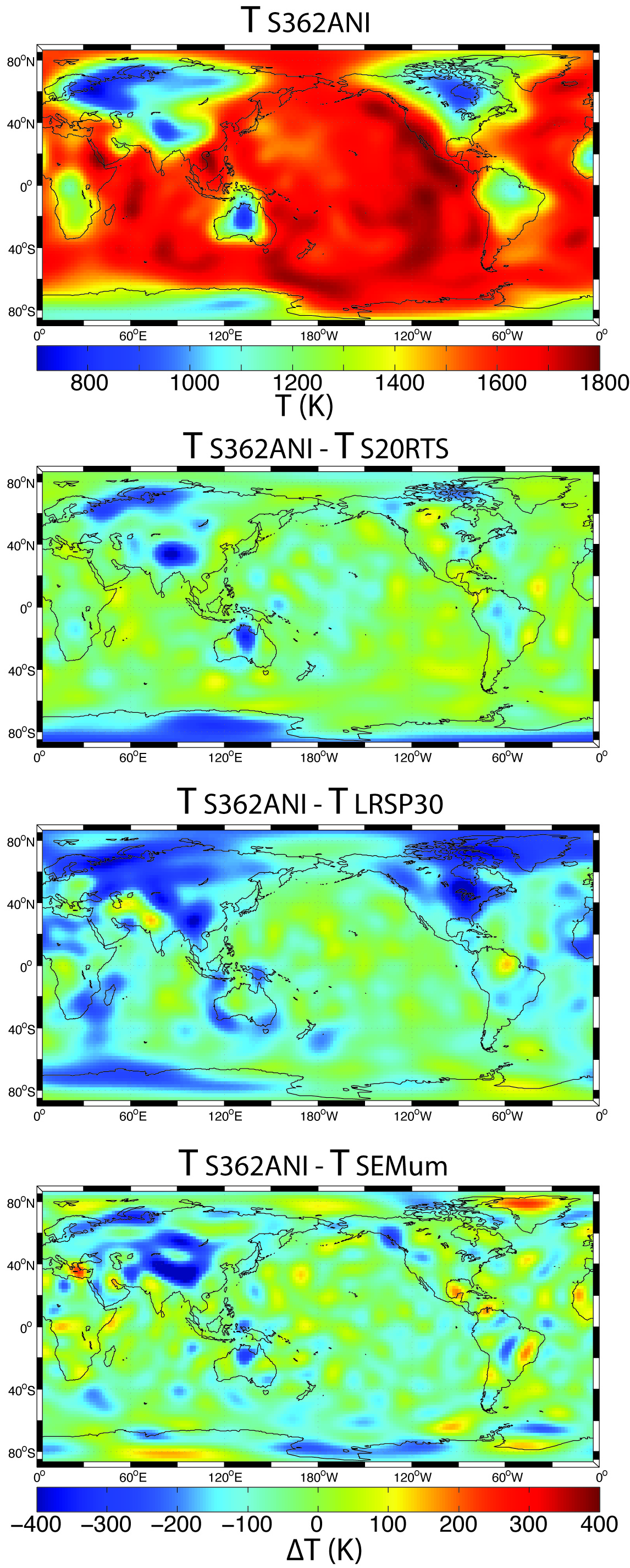
| Home |
| Research |
| Publications |
| CV |
| Personal |
| Seismo Lab |
| Earth & Planetary |
| UC Berkeley |
| Thermochemical mantle models
- Here, you may find the thermo-chemical models presented and discussed in Cammarano et al., 2011, GJI (2011).
The 3-D models include: temperature(T) - Composition (C), density (ρ), seismic velocities VP and VS, attenuation (1/QS where QS is quality factor) and viscosity (log10 values).
You may download either a zipped directory with all the models plus some matlab scripts to plot and analyze the models.
or choose, interactively, a specific model. The interactive procedure allows you to extract a model by choosing a) seismic model, b) Q correction and c) Compositional model among several choices. ZIP DIRECTORY? DOWNLOAD THERMO-CHEMICAL MODELS (Cammarano et al., 2011) SELECT YOUR MODEL? GO TO THE INTERACTIVE PROCEDURE
The study uses a specific mineral physics model to convert different seismic tomography VS models into T and ρ distributions.
Composition (C) with or without a petrological lithosphere have been considered. In addition, models with a non-monotonic C profile, based on previous work (Cammarano and Romanowicz 2007, Cammarano et al. 2009 and Tackley et al 2008) are also provided.
Mineral Physics model: - Mineralogy and elasticity as a function of pressure (P), T and C are based on the thermodynamically consistent model of Xu et al (2008), implemented in Perple_X (www.perplex.ethz.ch by Jamie Connolly). - Correction for anelasticity has been done by using the model Q5 of Cammarano et al. (2003) at a given period of 1 s. Other models in Cammarano et al. 2003 and the Faul and Jackson model (2005), at a given grain size of 1mm and periods of 1s or 150s, can be chosen with the interactive choice.
Petrological lithosphere: The model of petrological lithosphere is based on the 6 chemical compositions in Table 1 of Cammarano et al. 2011. The lithosphere-astenosphere-boundary as the 1200°C isotherm of the thermal interpretation of S362ANI (Kustowski et al 2008), assuming a pyrolite composition.
The thermochemical models have been used to assess how variations in T-C structure of the UM affect geoid and topography.
The synthetic computations have been done by using the fluid-dynamical code STAG-YY (Tackley 2008). The viscosity structure used for our sensitivity analysis is given by the 1-D profile V1 (Forte et al. 2010). In the given models, however, we give the viscosity predicted by the P-T-dependent model of Korenaga and Karato 2008, that is based on olivine rheology, for the upper mantle and from Yamazaki and Karato 2001 for the lower mantle, based on diffusion creep for perovskite. Later on, the interactive procedure will allow you to choose between different viscosity laws. If you have any request, ideas for collaborations or problems with the models please do not hesitate to contact me. IMPORTANT: The models are based on previous work of a lot of people. Please, if you use them, properly quote them. |
 |
